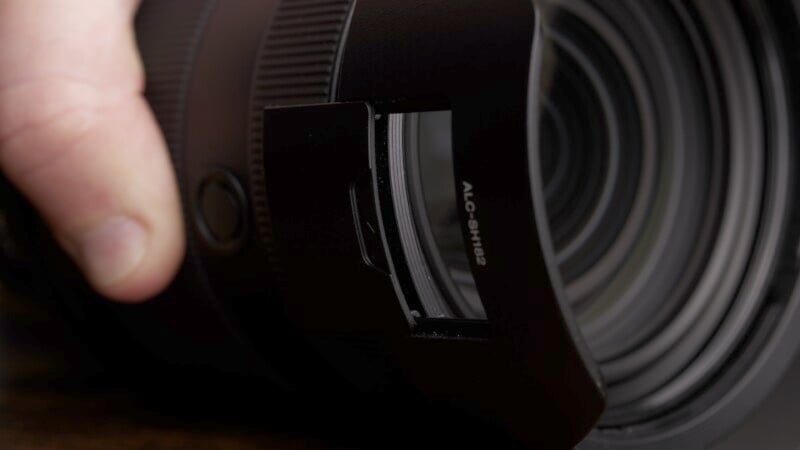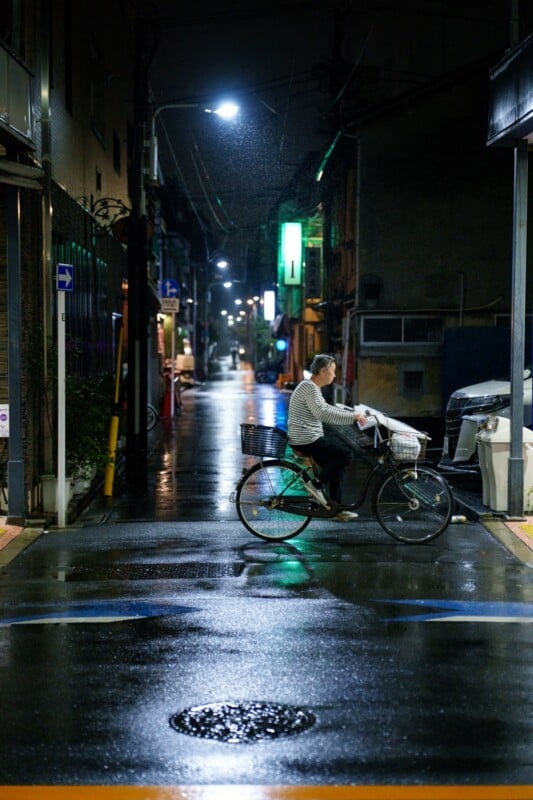Sony 28-70mm f/2 GM Review: One of the Best Lenses Ever Made
I’m an outlier in the photo world, especially regarding glass. I dislike the 35mm focal length, and as much as I love a good 24mm lens, a 28mm lens is even better. Maybe this is why I immediately gravitated to the quirky Canon RF 28-70mm f/2 zoom when it first came out. Despite its massive form factor, this bulbous gem of a lens quickly became a favorite of mine.

Speaking of hearts, be still my own because someone else has released a modern mirrorless version of this optical formula, and I, for one, am shocked. I figured that most prospective buyers would be turned off by the immense cost — not to mention weight — of any f/2 general zoom lens, but here is Sony adding to the mix with a new G-Master. It’s still expensive at $2,900 but it could be worth every penny. It gets even better because I also found myself in Tokyo, my favorite towering metropolis, to test it out.


Sony G-Master 28-70mm f/2 FE Review: How it Feels
No matter how you slice it, the Canon 28-70mm f/2 is a heavy lens that can be burdensome. Sony has managed to shave off a substantial amount of weight with its take on the fast zoom, bringing the lens to a manageable 32.4 ounces (918 grams). It is not lightweight by any stretch, but I happily carried it around all day without complaint. Like all G-Master lenses, the 28-70mm is solidly built and fully sealed.


There is no getting around the physical dimensions, though. An f/2 aperture with a wide zoom range will be bigger, and the 86mm filter diameter translates into expensive, hard-to-find neutral density and polarizing filters. The front hood has a nice push-button release and locks into place smoothly. There is also a door in the hood to allow for the adjustment of said expensive filters.


The G-Master lens has customizable buttons and a very smooth manual focus ring. We also get a switch to allow the zoom to twist with a light touch or require more resistance if desired. This helps to avoid the heavy lens elements creeping down with the pull of gravity as you stroll about. Lastly, we get an aperture ring with the option to have a smooth turning function or click stops as needed.


Sony G-Master 28-70mm f/2 FE Review: Shooting Experience
For such a bulky lens, the four Sony XD linear AF motors drive the lens elements quickly. I had no issues with the lens and did not have to struggle or keep up with the action while autofocusing. The lens felt balanced on the a7R V I brought and truly offers the versatility of having a pocket full of f/2 prime lenses all in one. Of course, the main headline feature is the f/2 aperture, which provides fast shutter speeds in low-light situations and shallow depth of field.


So, how is the bokeh on a lens that lives or dies by its appearance? Specular highlights have a delightful rendering with a nice cat’s eye look in the corners at f/2 and no onion rings or harsh-looking halos. Everything stays nice and round when the aperture is stopped down as well. This all translates into a soft and gentle transition throughout the focusing range and backgrounds that blur into a palette of silky tones. I loved the overall look of the bokeh on this lens, and it would excel as a portrait lens for wedding and street applications.


I also wanted to test LoCA because fast lenses like this are often plagued with color fringing in the out-of-focus areas. However, the Sony didn’t exhibit too much in the way of LoCA but you can see a little bit of a green/orange split. It wasn’t too problematic to deal with, but it is present.


If I’m going to lug around a large lens, any extra versatility it can offer is much appreciated. The Sony 28-70mm has a reasonably decent close-up capability with about 1:4 life-size reproduction and seems quite sharp at minimum distance. I also had an opportunity to test flare and found the results quite good. A little loss of contrast is present when shooting wide open, but there are no distracting ghosts or washed-out areas. Stopping the lens down didn’t show any significant ghosting problems either, so this lens can handle sunny days and bright lights directly into the frame.


Central sharpness is superb on this lens at 28mm, with great detail and plenty of contrast. The corners have a touch of softness when wide open, which gets better when stopped down. It’s the same story at 70mm with excellent performance regardless of the aperture chosen. This is a welcome outcome, with Sony committing a noticeable effort to make the lens perform exceptionally well at f/2.


Lens breathing, which causes a shift in the field of view of a lens as you focus, is an essential consideration for video shooters. The Sony 28-70mm exhibits a little movement at 28mm, which can be an issue. It is not excessive by any stretch and can be compensated for with Sony’s in-camera breathing compensation. Still, you lose a bit of wide-angle coverage, and 28mm is already tighter than the typical 24mm on a general zoom. However, breathing is very well controlled at the longer end of the focal length range.


Sony G-Master 28-70mm f/2 FE Review: My New Favorite
For me, this is an ideal lens. Everything I loved about the Canon version is present here too, but Sony manages to reduce the weight and have better corner sharpness. The $2,900 price tag is a big ask, but consider that you’re getting what amounts to many f/2 primes, all excellent optically, and the value begins to show. This lens may not be for everyone, and wanting a wider 24mm range or a more conservative f/2.8 aperture is perfectly valid. But if I took just one lens out with a Sony body for a day of shooting, this would be my choice every time.


Are There Alternatives?
The Sony G-Master 24-70mm f/2.8 is an awesome lens in a smaller package with more range. Giving up a stop of light might be more valuable to get these benefits for some shooters. It still delivers a shallow depth of field and is razor-sharp at f/2.8.
Should You Buy It?
Yes. If shallow depth of field and overall optical performance are paramount to you, the extra size and weight are worth the sacrifice. And besides, this amazing zoom lens is not all that heavy considering what you get — a bag of great primes in a zoom lens wrapper.



